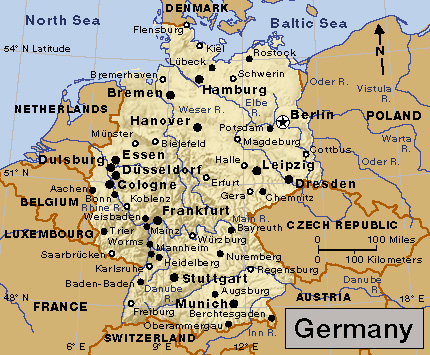Saarland, << zahrland or sahrland, >> is a state in Germany on the Franco-German border. Saarland covers 992 square miles (2,569 square kilometers) and has about 1 million people. It is named after the Saar River, which flows through the area. The region is sometimes called the Saar, Saar Territory, or Saar Basin. Saarland is valuable for its many coal mines and steel plants. The state’s capital is Saarbrücken.

Before World War I (1914-1918), what is now Saarland belonged to Germany. After the war, France wanted to annex Saarland in payment for war damages. The Treaty of Versailles gave France the use of Saarland coal mines for 15 years in payment for French losses. The League of Nations governed Saarland during the French occupation. The governing body included a French citizen, a German, and three people of other nationalities. Germany protested, and in 1930 the League ordered an end to allied control. Most of the region’s people were Germans. They voted in 1935 to become part of Germany.
As a result of Germany’s defeat in World War II (1939-1945), France occupied Saarland in 1945. Germany was divided into West Germany and East Germany. France directed Saarland’s defense and foreign relations and controlled its heavy industries. Saarland also joined in a customs and currency union with France. Saarland was allowed partial self-government in 1947. In October 1955, the people voted against transferring the responsibilities of defense and foreign relations from France to the Western European Union. On Dec. 18, 1955, they elected a parliament pledged to unite Saarland with West Germany. By agreement between France and West Germany, this union occurred on Jan. 1, 1957. West Germany and East Germany united in 1990.
